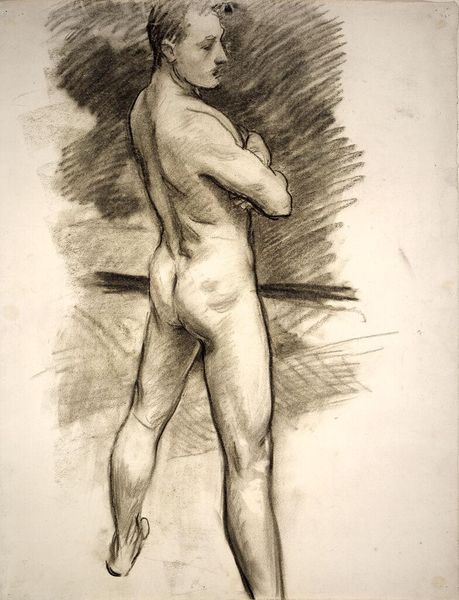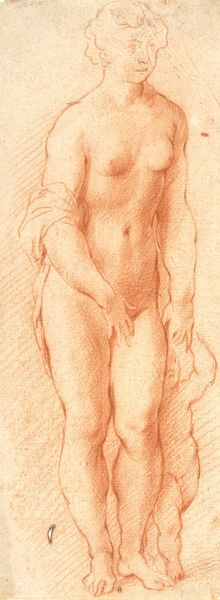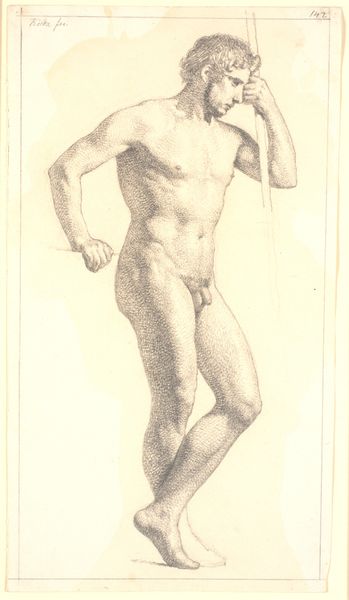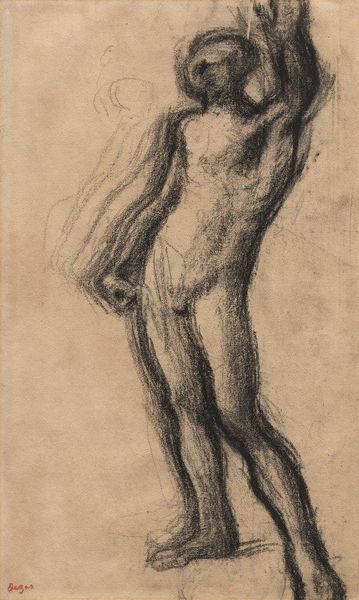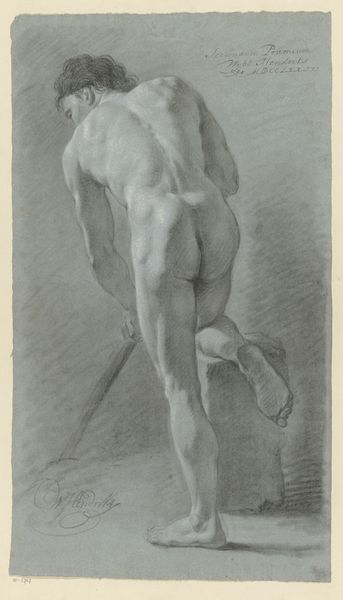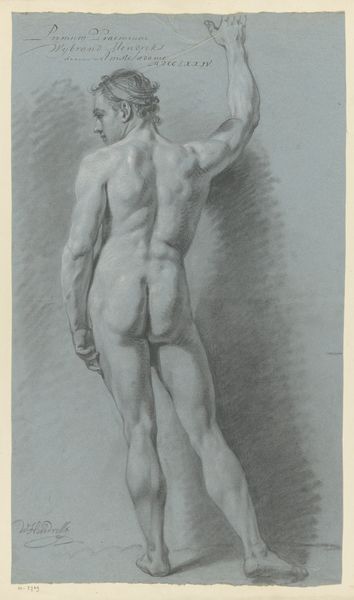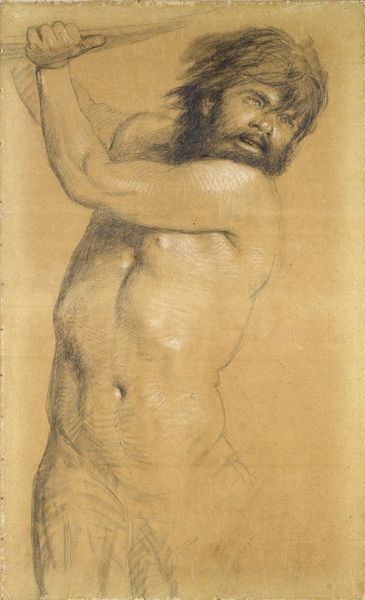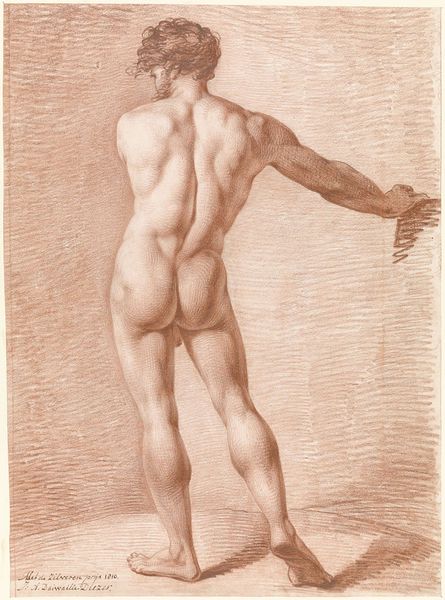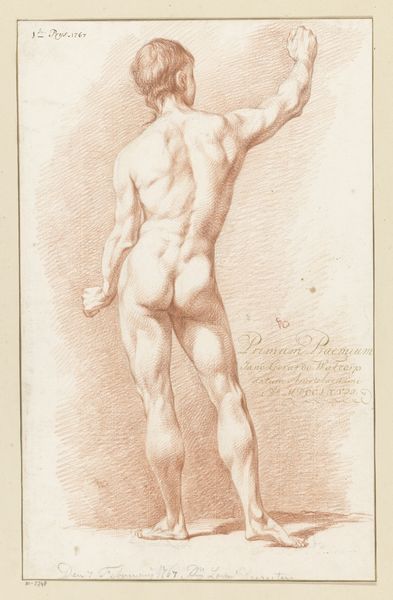
drawing, charcoal
#
drawing
#
charcoal drawing
#
form
#
line
#
portrait drawing
#
charcoal
#
academic-art
#
nude
#
realism
Copyright: Public domain
Curator: This charcoal drawing is by Orest Kiprensky, titled "Sitter" created in 1803. What strikes you immediately about this image? Editor: It’s a study in tension. The figure is straining, and the overall tone feels melancholic, despite its classic realism. He’s carrying an unseen burden. Curator: Indeed. Consider the symbolic implications of a nude figure straining. Nudity here represents vulnerability, openness, stripped bare. Combined with the implied weight above, one cannot avoid seeing Atlas, an ancient symbol of endurance but also unending, crushing labor. Editor: Yes, the association with Atlas makes sense. The late 18th and early 19th centuries were a time of enormous political and social upheaval. Artists often referenced classical themes to comment on contemporary issues, perhaps drawing attention to the burdens felt by common people during such tumultuous eras? Curator: It's worth mentioning the medium of this artwork too, as the rough texture of the charcoal enhances this feeling. Charcoal offers an immediacy and a darkness quite different from say, oil painting. Editor: How would that choice be read culturally at the time? Curator: Remember the academic setting. This is not simply any figure but likely an atelier exercise; Kiprensky himself was incredibly skilled, achieving academic excellence, so here his rendering is about establishing, literally *drawing*, a certain classical ideal, a cultural memory of form. Editor: Which speaks to an artistic ambition of setting visual foundations, setting an academic base of shared visual vocabulary perhaps… While I tend to relate artworks to a broader audience through politics and historical context, your symbolic perspective opens up new pathways for interpreting visual art within its lineage and legacy. Curator: Exactly. Appreciating both symbolic intention, medium specificity and wider sociopolitical setting enhances our understanding. These dialogues help broaden perspectives about artistic intentions that continue reverberating. Editor: So this somewhat melancholic drawing from the past allows us to think deeper today about resilience as a visual subject as a visual document through its form and through a socio-political landscape.
Comments
No comments
Be the first to comment and join the conversation on the ultimate creative platform.
